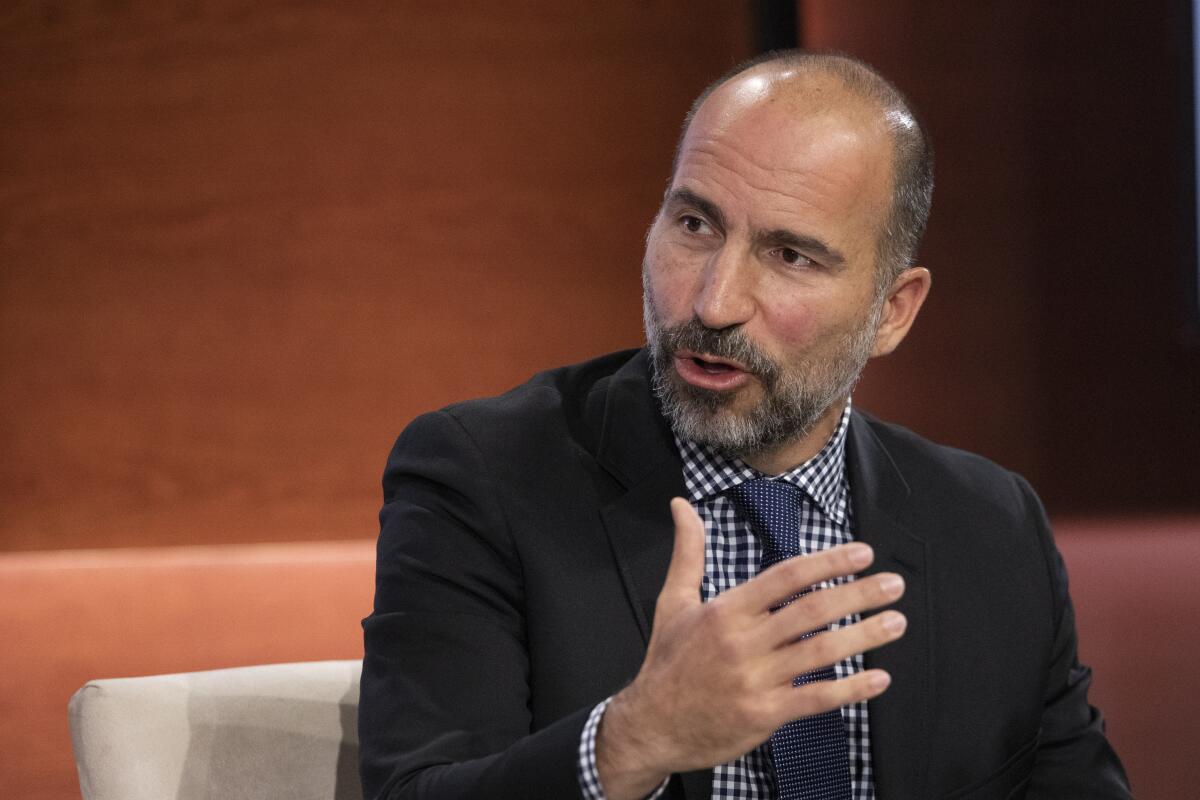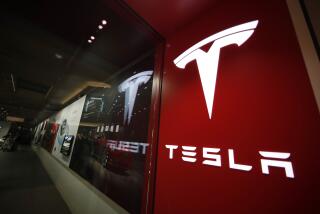Uber racked up losses in an attempt to ease driver shortage

- Share via
Uber Technologies Inc. spent heavily to lure drivers back in the second quarter, resulting in a wider-than-predicted loss and raising fresh doubts about the reliability of its labor model long-term. Its shares fell 2.2% on Wednesday.
The loss before interest, tax and other expenses was $509 million in the period that ended in June, Uber said in a statement Wednesday. That’s wider than the prior quarter but narrower than a year earlier. Analysts expected a loss of $325 million, according to an average of analysts’ estimates compiled by Bloomberg.
Uber said that the loss will be less than $100 million in the third quarter and that gross bookings will be $22 billion to $24 billion. The forecast is about in line with analysts’ estimates. Uber cautioned that a wider outbreak of the Delta variant of the coronavirus could change the results.
“We invested in recovery by investing in drivers, and we made strong progress,” Uber Chief Executive Dara Khosrowshahi said in a statement.
Uber and Lyft drivers who have joined a strike across California to protest gig-work conditions are aiming their message at lawmakers in Washington.
Expectations for Uber were already lessened Wednesday after Lyft Inc., the second-largest U.S. ride-hailing company, reported a weak forecast for the third quarter. Its shares slid 10.6%. Lyft did prove, however, that its business can be profitable, at least when overlooking stock-based compensation and other costs. Lyft turned its first adjusted profit in the second quarter. Uber said it’ll generate a quarterly adjusted profit by the end of the year.
Uber has been using the pandemic as an opportunity to expand further beyond rides. The San Francisco company placed a big bet on freight with the $2.25-billion purchase of Transplace last month. It also moved into grocery and alcohol delivery through acquisitions, added package delivery and struck a partnership with GoPuff to ferry convenience store items.
“What we’re looking for is continued expansion beyond food,” said Ron Josey, an analyst at JMP Securities. “The battleground that’s developing is to get anything delivered within an hour or two.”
Uber has been delivering meals from restaurants since 2014, but the pandemic dramatically accelerated growth. Gross bookings from delivery orders in the second quarter nearly doubled from the same period last year to $12.9 billion. Growth was muted compared with the first quarter.
“The hyper growth is likely over,” Mandeep Singh, an analyst at Bloomberg Intelligence, wrote in July.
Second-quarter sales doubled from a year earlier to $3.93 billion, beating analysts’ estimates. The number of people using an Uber service was 101 million in the second quarter, in line with estimates.
Uber posted its first net profit as a public company in the second quarter. Income of $1.1 billion was driven in large part by Uber’s stock in Didi Global Inc., China’s largest ride-hailing company, which went public in June. Since then, the shares have declined 30% after Beijing launched an inquiry into the company and removed Didi from Chinese app stores.
Khosrowshahi said Uber will consider selling Didi shares or other holdings, which are valued at nearly $15 billion and also include Southeast Asia’s Grab Holdings Inc. and Joby Aviation. He singled out Didi as more of a financial interest than a strategic one.
“We don’t intend to run an investment firm, but we have sufficient liquidity to ensure that we have the flexibility to maintain those positions,” Khosrowshahi said in a conference call with analysts Wednesday.
Challenges in the ride-hailing business persist. Many drivers quit earlier in the pandemic because demand evaporated and because of concerns for their own health. In recent months, vaccines have brought riders back, but the return of workers hasn’t kept pace. Uber said in April that it would spend $250 million to get more drivers on the road by doling out bonuses and other incentives. Now, the spread of the Delta variant creates a new, unpredictable problem for the transportation business.
More to Read
Inside the business of entertainment
The Wide Shot brings you news, analysis and insights on everything from streaming wars to production — and what it all means for the future.
You may occasionally receive promotional content from the Los Angeles Times.











